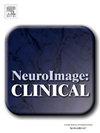Association between clinical features and decreased degree centrality and variability in dynamic functional connectivity in the obsessive–compulsive disorder
Abstract
Neuroimaging studies have indicated widespread brain structural and functional disruptions in patients with obsessive–compulsive disorder (OCD). However, the underlying mechanism of these changes remains unclear. A total of 45 patients with OCD and 42 healthy controls (HC) were enrolled. The study investigated local degree centrality (DC) abnormalities and employed abnormal regions of DC as seeds to investigate variability in dynamic functional connectivity (dFC) in the whole brain using a sliding window approach to analyze resting-state functional magnetic resonance imaging. The relationship between abnormal DC and dFC as well as the clinical features of OCD were examined using correlation analysis. Our findings suggested decreased DC in the bilateral thalamus, bilateral precuneus, and bilateral cuneus in OCD patients and a nominally negative correlation between the DC value in the thalamus and illness severity measured using the Yale-Brown Obsessive Compulsive Scale (Y-BOCS). In addition, seed-based dFC analysis showed that compared to measurements in the HC, the patients had decreased dFC variability between the left thalamus and the left cuneus and right lingual gyrus, and between the bilateral cuneus and bilateral postcentral gyrus, and a nominally positive correlation between the duration of illness and dFC variability between the left cuneus and left postcentral gyrus. These results indicated that OCD patients had decreased hub importance in the bilateral thalamus and cuneus throughout the entire brain. This reduction was associated with impaired coupling with dynamic function in the visual cortex and sensorimotor network and provided novel insights into the neurophysiological mechanisms underlying OCD.

 求助内容:
求助内容: 应助结果提醒方式:
应助结果提醒方式:


